5 Best Places to Sell Pearls for Cash [2024]
by Ryan Hart | Updated on March 9, 2024 | Post may contain affiliate links. As an Amazon Associate we earn from qualifying purchases.
In this article, we will discuss the best places to sell pearls. We will also provide tips on how to get the most money when selling jewelry online.
Let’s get started!
Where to Sell Pearls?

It’s certainly no secret that pearls are valuable. These lustrous orbs are classic jewelry pieces, and whether worn as necklaces, earrings, or bracelets, they always add a touch of elegance.
But when it is time to unload them, finding a trustworthy buyer can be challenging. As a seller, you want your pieces to sell for a good price. If you’re looking to get cash for your pearls, these five marketplaces are the best for finding reputable buyers:
1. Sotheby’s
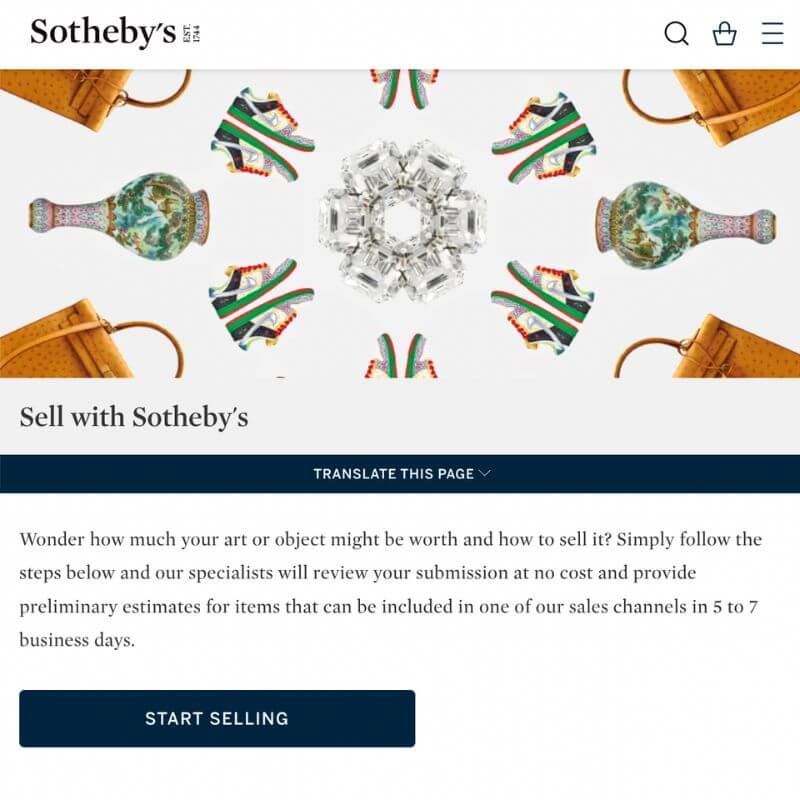
Sotheby’s is one of the world’s largest auction houses, specializing in fine art, antiques, and collectibles. Founded in London in 1744, Sotheby’s has held some of the most famous and valuable auctions in history, including the sale of the “Mona Lisa” in 1904 and the “Edvard Munch” paintings in 2012.
Sotheby’s also offers a wide range of other services, such as private sales, appraisals, and estate planning.
Highlights:
- A long history of selling pearls
- An extensive network of sellers and buyers
- Great for high-value sales
- Experts available that are knowledgeable in the market
- High-quality services and competitive prices
What Sotheby’s Does Best:
They have a team of experts who will evaluate your pearls and give you an estimate of what they’re worth. They also have a vast network of buyers, so you’ll likely get a good price for your pearls if you sell them through Sotheby’s.
Best Suited For:
Sotheby’s is excellent for sellers looking to auction their pearls for higher prices.
Sell Your Pearls with Sotheby’s
2. I Do Now I Don’t
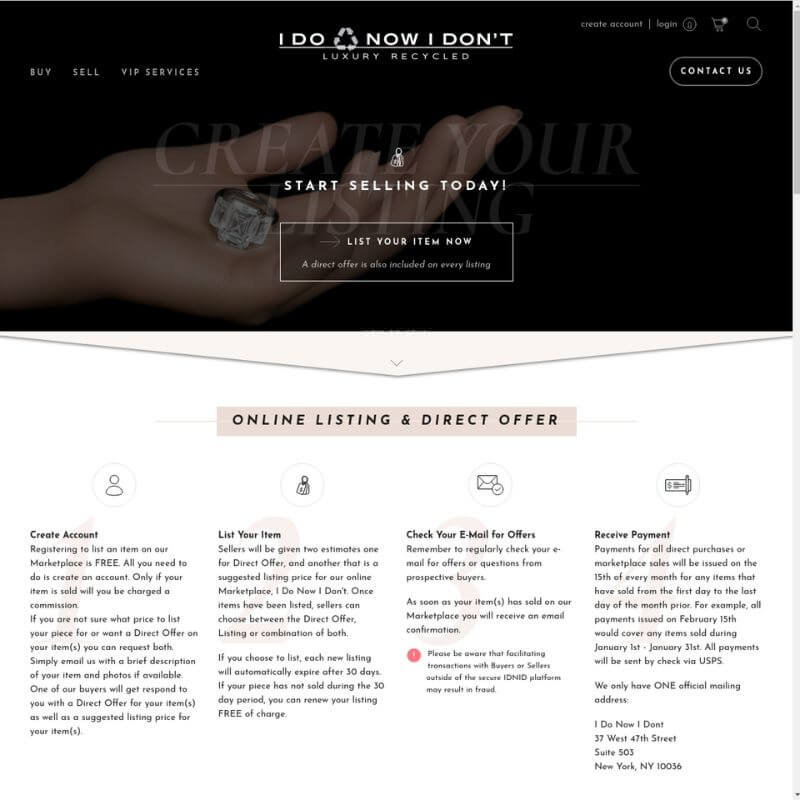
I Do Now I Don’t is a website that allows people to sell their unwanted engagement and wedding rings. The site offers a convenient way for people to get rid of jewelry they no longer want, and it also provides an opportunity for bargain-hunters to snag some great deals.
Highlights:
- Hassle-free selling process. Everything from appraising to shipping to buyers is taken care of
- Large network of buyers
- Large platform for selling jewelry
- Peer-to-peer marketplace
- Free shipping and insurance
What the I Do Now I Don’t Does Best:
I Do Now I Don’t offers a convenient, safe, and secure platform for selling pearls without worrying about logistics.
Best Suited For:
I Do Now I Don’t is an excellent option for people who want to sell pearls directly to buyers in a safe and trustworthy way.
Sell Your Pearls with I Do Now I Don’t
3. eBay
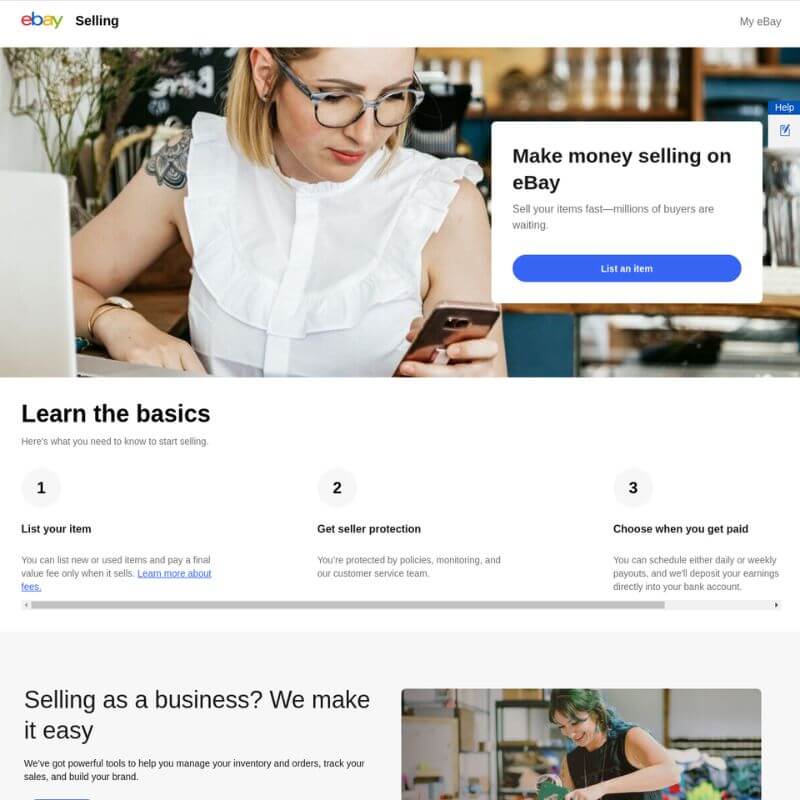
eBay is an online marketplace where people can buy and sell just about anything. The company was founded in 1995 and quickly became a popular destination for online shoppers.
eBay is especially well-known for its auctions, which allow buyers to compete against each other to get the best price on an item.
Highlights:
- Access to millions of potential buyers around the world
- Charges lower fees to sellers compared to other platforms
- Well established platform
- Ability to list pearls directly
- Sellers retain control over pricing
What eBay Does Best:
eBay makes it easy to list jewelry, tailor listings, and connect to a large number of buyers.
Best Suited For:
If you want to sell pearls, eBay is an easy platform to list your pearls at your chosen price point.
4. The RealReal
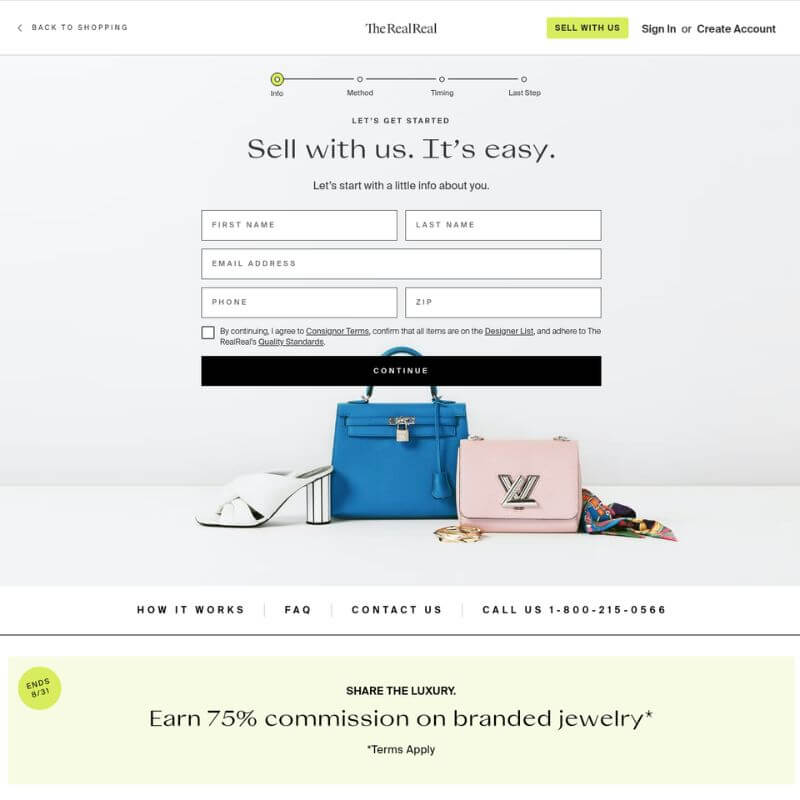
The RealReal is the world’s largest online marketplace for authenticated luxury consignment. With millions of shoppers each month and over 25,000 items listed for sale, The RealReal is the go-to destination for luxury consignment.
Highlights:
- Millions of shoppers each month
- Authentication process to ensure quality
- Competitive pricing
- Sellers are paid as soon as a sale is made
- Sales information is available for buyers to inform their listing choices
What the Company Does Best:
You can sell your pearls to many potential buyers, increasing your chances of finding a buyer willing to pay your asking price.
Best Suited For:
Sellers looking to get the best prices when they sell pearls have access to an extensive network of buyers and experts readily available to determine how much their pearls are worth.
Sell Your Pearls with The RealReal
5. True Facet
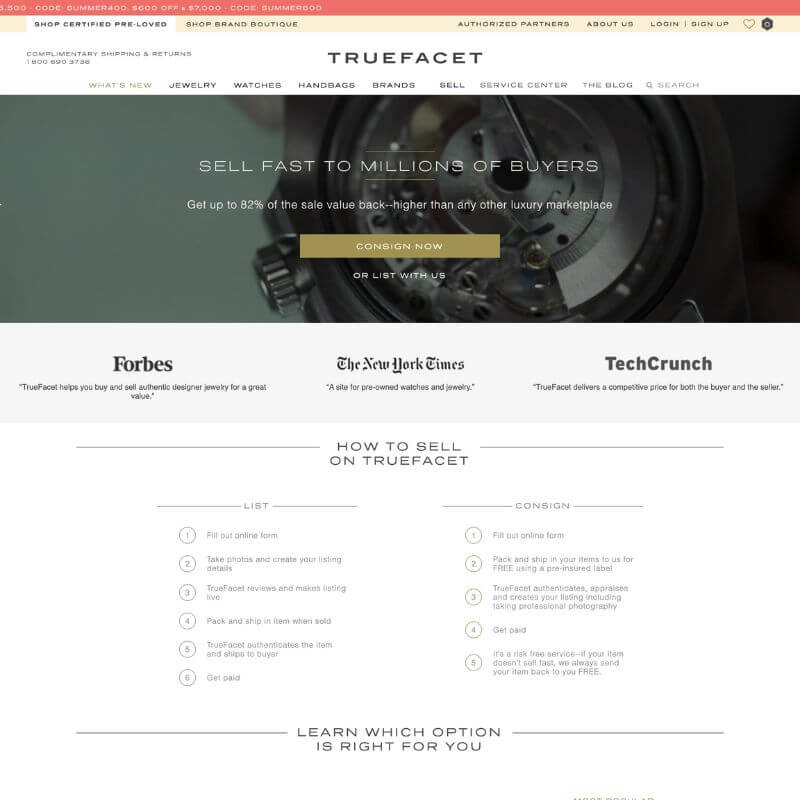
True Facet is a company that specializes in assessing the quality of diamonds and other gemstones. In addition to providing quality assurance for diamonds, True Facet also offers a wide range of services, including gemstone restoration, repair, and appraisals.
True Facet offers a wide range of products, including engagement rings, necklaces, bracelets, and earrings.
Highlights:
- Sellers can reject unsatisfactory offers
- A team of gemologists can appraise your pearls
- A pool of global buyers
- Reputation for fairness
- 24/7 Concierge
What the Company Does Best:
True Facet specializes in fine jewelry and provides expert support as well as the ability to reject offers so that sellers get the best price for their pearls.
Best Suited For:
Sellers looking for qualified buyers and a risk-free platform to sell pearls.
Sell Your Pearls with True Facet
How to Tell if Pearls Are Real
Pearls are a classic jewelry staple that can add elegance to any outfit. But with the wide range of prices on the market, it can be challenging to know if you’re getting a good deal on a genuine pearl.
One of the simplest ways to tell if pearls are real is to look at them closely in good light.
Genuine pearls will have some imperfections on their surface, as they are formed by an oyster coating a small piece of sand or other irritants. Fake pearls, on the other hand, are often perfectly round and smooth.
Another way to tell if pearls are natural is to rub them lightly against your teeth. Real pearls will feel slightly gritty, while fake ones will be completely smooth.
By following these simple tips, you can be sure you’re getting the real thing when shopping for pearls.
Frequently Asked Questions
Where do pearls come from?
Pearls are made inside the shells of certain types of mollusks, such as oysters and mussels. These mollusks secrete a substance called nacre, which coats any foreign object that enters the shell. Over time, this nacre builds up into a pearl.
Nacre is made up of microscopic calcium carbonate crystals and protein. The more nacre that is produced, the larger the pearl will be.
Pearls are found in various colors, depending on the type of oyster they come from and the water conditions where they are grown. The most popular color of a pearl is white, but pearls can also be cream-colored, yellow, pink, or even black.
The pearls that collectors most prize are those that have been formed naturally. However, many pearls on the market today are cultured pearls, meaning they have been grown in pearl farms.
A cultured pearl is typically indistinguishable from natural pearls, making them a more affordable option for many people.
How much are pearls worth?
While the value of pearls can vary depending on many other factors, they are typically worth quite a bit of money. For example, the price of a pearl is determined by its size, shape, color, and luster.
The most valuable pearls are large and perfectly round with a rich, creamy color. Pearls with blemishes or an irregular shape are less valuable. However, even imperfect pearls can be beautiful and therefore still fetch a high price.
The larger the pearl, the more it will be worth to a buyer. Pearls are graded on a scale from A to AAA, with AAA being the highest quality. Pearls that are AA or below are considered to be of lower quality and are usually less expensive.
How do I determine the value of my pearls?
Determining the value of your pearls, whether they are part of pearl jewelry like a pearl ring or are loose pearls intended for use in gemstone jewelry, involves assessing several key factors:
Type of Pearls: Identify whether the pearls are natural, cultured, or imitation. Natural pearls are the rarest and typically the most valuable because they are formed naturally without human intervention. Cultured pearls are created with human help and are common in today’s market. Imitation pearls have the least value as they are man-made from materials like glass or plastic.
Size: The size of the pearls plays a significant role in their value. Larger pearls are generally more valuable because they take longer to form, making them rarer.
Shape: Round pearls are the most sought after and valuable due to their rarity and appeal in traditional pearl jewelry settings. However, other shapes like baroque or teardrop can also be valuable, particularly if they are symmetrical and well-formed.
Luster: Luster is perhaps the most important indicator of a pearl’s quality and value. High-quality pearls will have a bright, reflective luster that makes them appear luminous from within. Dull or chalky pearls are typically of lower quality.
Surface Quality: Check the surface of the pearls for blemishes, cracks, or spots. The cleaner and smoother the surface, the higher the value of the pearl.
Color: While white is the classic and perhaps most popular color for pearls, other colors such as black, gold, and pink can also be valuable. The value often depends on the rarity and demand for the specific color in the market.
Nacre Quality: The thickness of the nacre, the organic-inorganic composite material produced by some mollusks and forming pearls, also affects the value. Thicker nacre means the pearl will not only be more durable but will usually have a better luster, which enhances its beauty and value.
To accurately determine the value of your pearls, you might consider consulting with a gemologist who specializes in pearls. They can provide a detailed appraisal of your pearl jewelry or loose pearls, considering all the factors mentioned. This appraisal is particularly important if you plan to insure your jewelry or sell it, as it will give you a reliable estimate of its worth in the current market.
What factors affect the price of pearls?
Several factors can significantly impact the price of pearls, whether they are used in pearl jewelry, set in a pearl ring, or incorporated into gemstone jewelry. Here are the key elements to consider when evaluating the value of pearls:
Type and Origin: The type of pearl—whether natural, cultured, or imitation—greatly affects its price. Natural pearls are the rarest and most expensive, while cultured pearls are more common but still highly valued. The origin of the pearls also plays a role, as some regions are known for producing higher quality pearls than others.
Size: Larger pearls are typically more valuable than smaller ones because they take longer to form and are rarer. The size will directly influence the price, especially in pieces like a pearl ring or necklaces where size can be a prominent feature.
Shape: The shape of the pearl affects its price; round pearls are generally the most desirable and costly. However, unique shapes like baroque or teardrop can also command high prices if they are well-formed and aesthetically pleasing.
Luster: The luster of a pearl is a critical determinant of its value. Pearls with high luster are more reflective and shiny, indicating good quality and craftsmanship, which contributes to a higher price.
Surface Quality: Pearls with smooth, flawless surfaces are more valuable than those with visible blemishes or imperfections. The cleaner the surface, the more desirable and valuable the pearl.
Color: The color of the pearl can also affect its price. While classic white pearls are perennially popular, unusual colors like gold, black, or pink can be more valuable depending on current fashion trends and market demand.
Metal and Craftsmanship: The type of metal used in the setting of the pearl jewelry, such as a gold clasp or sterling silver setting, also affects the price. High-quality metals like 18k gold enhance the value, as does skilled craftsmanship in the design and construction of the jewelry.
Market Factors: As with any gemstone jewelry, the current market demand can influence pearl prices. Additionally, the reputation of the seller and the guarantee of authenticity and quality can justify a fair price for the pearls.
When purchasing or evaluating pearl jewelry, considering these factors will help you understand the price variations and ensure you are paying a fair price for the quality and type of pearls you are choosing.
How do different types of pearls (like freshwater, Akoya, Tahitian) vary in value?
Different types of pearls, such as freshwater, Akoya, and Tahitian, have distinct characteristics that affect their value, especially when incorporated into jewelry with elements like gold clasps, sterling silver settings, or gemstones.
Freshwater Pearls: These pearls are typically the most accessible and economical option. Cultured mainly in China, freshwater pearls come in a wide range of shapes, sizes, and colors. Although historically less round and lustrous than their saltwater counterparts, advancements in cultivation techniques have enhanced their quality. This affordability and versatility make freshwater pearls a popular choice for a variety of jewelry designs, from simple sterling silver settings to elaborate pieces adorned with a diamond and other gemstones.
Akoya Pearls: Renowned for their superior luster and almost perfect round shapes, Akoya pearls are often considered the classic pearl choice for high-end jewelry. Cultured primarily in Japan and China, they are typically white or cream with overtones of pink or silver. Their high luster and roundness make them ideal for classic pieces like earrings or a pearl ring, often set in gold.
Tahitian Pearls: Originating from the warm waters of French Polynesia, Tahitian pearls are known for their larger size and dramatic colors, ranging from dark black to green, blue, and sometimes even a metallic silver. These pearls are highly valued not only for their unique colors but also for their significant size and the thick nacre that contributes to their lustrous sheen. Tahitian pearls are often set in high-quality jewelry designs, featuring gold clasps and sometimes paired with a diamond, making them prized possessions in the luxury gemstone market.
Overall, the value of these pearls is influenced by factors such as luster, color, shape, and size, as well as the type of metal and gemstones used in the jewelry setting. Whether set in a simple silver ring or a lavish diamond-encrusted necklace, the type of pearl plays a crucial role in defining the piece’s elegance and worth.
How can I avoid scams and ensure a safe transaction when selling pearls?
When selling valuable items like a pearl ring with a gold clasp or cultured pearl jewelry embellished with diamonds, it’s crucial to ensure a safe transaction and avoid scams. Start by verifying the credibility of the buyer, especially if the interaction is online. Research their history and check for any reviews or complaints. Getting your pearls professionally appraised is also vital; this not only gives you an accurate value based on factors like the presence of gold, diamonds, or notable brands like Van Cleef but also provides a documented description that can be useful during the sale.
For the transaction, opt for secure payment methods that offer protection and traceability. Avoid direct wire transfers to unfamiliar parties and consider using third-party escrow services for high-value transactions, which ensure that funds are only released once the buyer confirms receipt of the item in its agreed condition. If meeting in person, choose a public and secure location like a bank or a professional office to conduct the sale. Provide detailed receipts that include a complete description of the item and retain all documentation related to the transaction.
For added security, if the pearls need to be shipped, use a reputable courier service, insure the package for its full value, and require a signature upon delivery. These measures not only help protect your financial interests but also build trust with the buyer and ensure a transparent and smooth selling process.
Bottom Line
Selling your pearls online is a convenient way to reach potential buyers. You can reach people from all over the world with just a few clicks of the mouse.
Plus, selling online allows you to set your own price. You are not limited by what brick-and-mortar stores and pawn shops are willing to pay for your pearls.
Selling your pearls online is the best choice for maximizing your profits and reaching the widest audience possible.
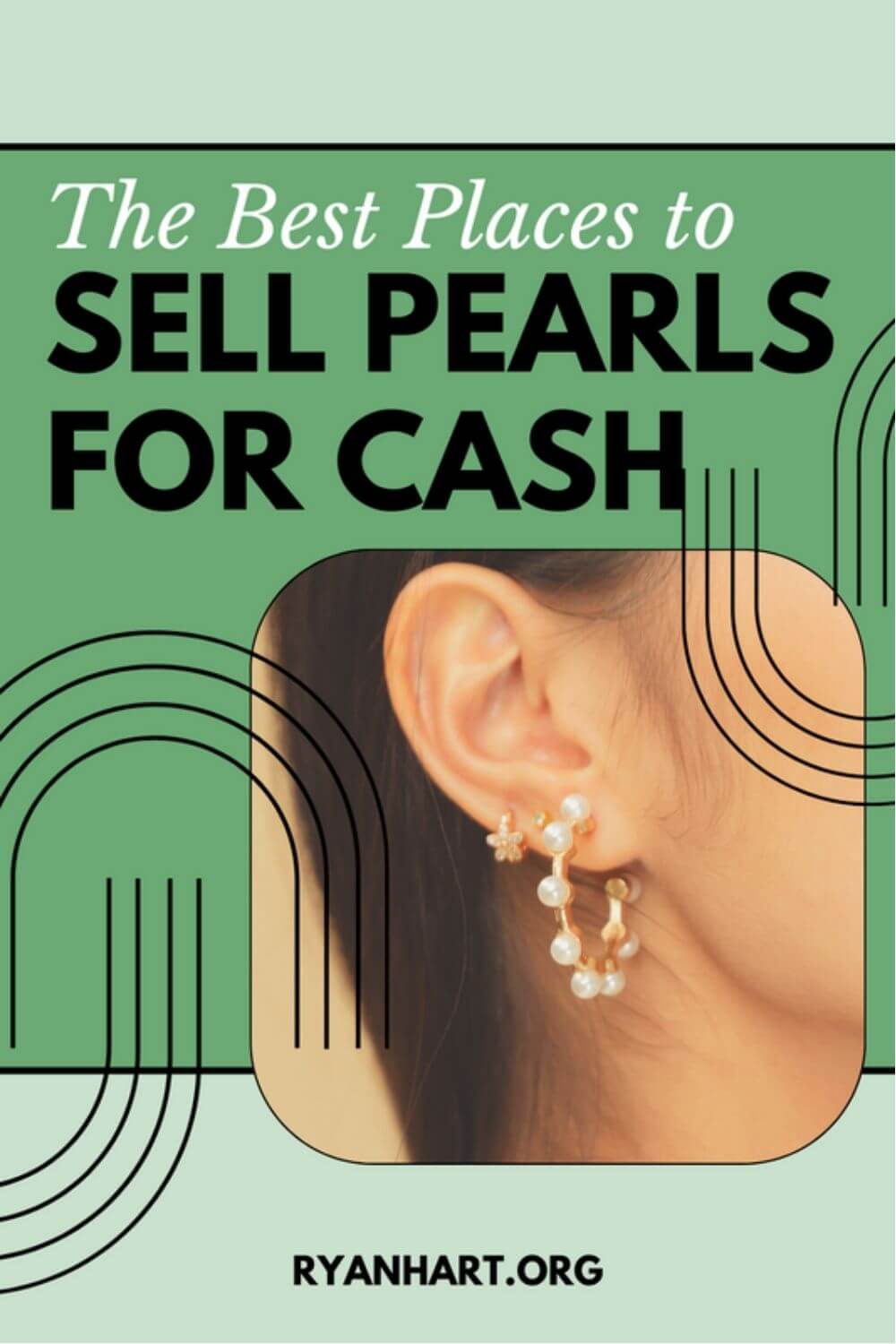

Ryan Hart is a licensed insurance agent, writer, and former home designer. He is on a mission to help couples protect their homes in retirement with life insurance and annuities.
Want to connect with Ryan? Click here to get his FREE retirement planning newsletter
Related:
